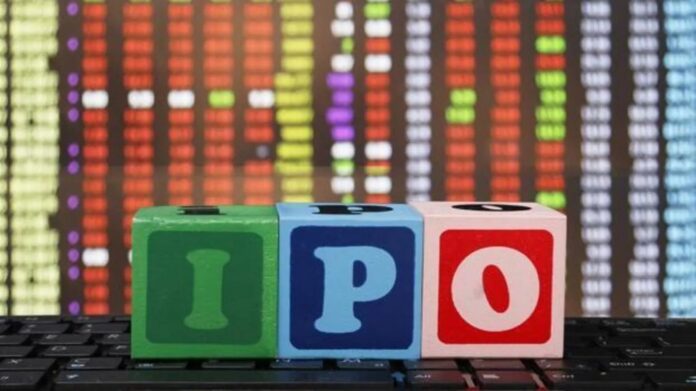The Surge of IPOs in 2024: Trends, Challenges, and Future Prospects
The year 2024 has marked a significant milestone in the Indian financial landscape, witnessing the highest number of Initial Public Offerings (IPOs) in a decade. According to data from Prime Database, the average size of mainboard IPOs has surged to ₹1,795 crore, the highest since 2021. This uptick in IPO activity reflects a dynamic shift in investor sentiment and market conditions, but it also brings to light a complex interplay of factors influencing demand and performance.
The Changing Landscape of IPO Demand
Investment bankers have observed a notable trend: smaller IPOs are currently experiencing higher demand and better listing-day gains compared to their larger counterparts. Yatin Singh, head of investment banking at Emkay Global, pointed out that there seems to be an inverse relationship between the size of an IPO and its listing gains and subscription levels. This shift suggests that investors are becoming more selective, favoring smaller companies that may offer better growth potential and immediate returns.
Neha Agarwal, managing director and head of equity capital markets at JM Financial Institutional Securities, echoed this sentiment, noting a decline in subscription levels from high-net-worth individuals (HNIs) and retail investors in recent IPOs. Factors contributing to this cautious approach include market volatility, rising valuations, and economic uncertainty, which have made investors more discerning about where to allocate their capital.
High-Profile IPOs and Mixed Responses
The IPO landscape in 2024 has seen some high-profile entries, including Hyundai Motor India Ltd, which launched the largest IPO in the country’s history. While qualified institutional buyers (QIBs) showed robust interest, bidding for 6.97 times the shares allocated to them, retail investor participation was lackluster, leading to a muted debut for the stock. Similarly, Swiggy’s IPO, the second-largest of the year, garnered only modest interest from retail investors, resulting in a subscription rate of just 1.14 times.
In contrast, smaller IPOs have thrived. Arkade Developers, with an issue size of ₹410 crore, experienced a remarkable 30% gain on its listing day, while BLS E-services saw its ₹310.91-crore IPO soar by an astonishing 175%. This divergence in performance highlights a growing preference among investors for smaller, potentially high-growth companies over larger, established firms.
Future Outlook: A Mixed Bag of Opportunities
Looking ahead, the question arises: will the trend of smaller IPOs continue, or will larger offerings regain their appeal? The pipeline for 2025 indicates a blend of both, with around 87 companies currently filing for offerings with the Securities and Exchange Board of India (Sebi). Singh and Agarwal both suggest that while smaller IPOs are on the rise, larger ones still capture significant attention and will continue to play a crucial role in the primary market.
Analysts predict that companies with strong fundamentals and stable financial outlooks will perform well in the current IPO cycle. Agarwal noted that this trend is likely to persist, particularly for businesses resilient to macroeconomic pressures. Despite recent IPOs facing short-term resistance, the long-term outlook for the primary market remains optimistic.
Expanding IPO Pipeline and Economic Optimism
According to a recent note by Axis Mutual Fund, the IPO pipeline for the latter half of the fiscal year is nearly three times the amount raised in the first half, with 91 companies looking to raise a staggering $17 billion. Additionally, secondary stake sales from promoters and private equity are expected to rise, driven by expiring lock-ins and favorable trading multiples in the market.
Companies such as NSDL, Avanse Financial Services, and Vishal Mega Mart have received approval for IPOs, while others like Hero Fincorp and JSW Cement are awaiting approval from Sebi. This surge in IPO activity reflects growing optimism about India’s economic outlook, fueled by broad-based growth across sectors and increasing opportunities for mid-sized companies.
Navigating Market Volatility
Despite the positive outlook, the Indian equity market has experienced volatility due to various global and domestic factors, including geopolitical tensions and fluctuating oil prices. This volatility has led to a mixed response from domestic institutional investors, with foreign institutional investors (FIIs) showing signs of retreat. Singh noted that the subdued response to marquee IPOs like Swiggy indicates that weak FII sentiment has impacted the primary market.
However, some experts believe that the current market conditions present an attractive entry point for investors. Singh remarked that IPO valuations are more reasonable than they were a few months ago, making it a favorable time for potential investors. Yet, caution is warranted, as inflated valuations may not be sustainable and could lead to further market corrections.
Conclusion: A Promising Yet Cautious Future
The IPO landscape in 2024 is characterized by a mix of excitement and caution. While the number of offerings has surged, the demand dynamics are shifting, with smaller companies gaining favor among investors. The future holds promise, with a robust pipeline of IPOs and a resilient economic outlook. However, market volatility and investor sentiment will continue to play a crucial role in shaping the IPO landscape. As the market evolves, investors must remain vigilant, focusing on fundamentals and long-term growth potential to navigate the complexities of the primary market effectively.

